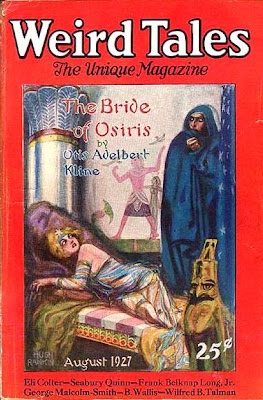Robert Kennedy Abbett was born in Hammond, Indiana, on January 5, 1926, to Clarence C. and Vere (Kennedy) Abbett. He studied nights at the Chicago Academy of Fine Art and graduated from Purdue University and the University of Missouri. Bob Abbett served in the U.S. Navy during World War II.
Abbett wrote for a public relations firm in Chicago before embarking on a career as an artist, working in succession for a number of art studios. His first magazine illustrations were for Extension magazine. Abbett's list of freelance clients during the 1950s and '60s includes Argosy, Reader's Digest, Redbook, Sports Afield, This Week, and True, as well as Ballantine, Bantam, Dell, Fawcett, Pocket, Pyramid, and Signet books.
Bob Abbett left illustration behind in the 1970s, afterwards devoting himself to painting pictures of outdoor sporting scenes, hunting dogs, game animals, and similar subjects. He was also a portraitist, a teacher, and magazine columnist. He lived at his own Oakdale Farm in Connecticut for many years and died at home in Bridgewater, Connecticut, on June 20, 2015. He was eighty-nine years old.
Abbett wrote for a public relations firm in Chicago before embarking on a career as an artist, working in succession for a number of art studios. His first magazine illustrations were for Extension magazine. Abbett's list of freelance clients during the 1950s and '60s includes Argosy, Reader's Digest, Redbook, Sports Afield, This Week, and True, as well as Ballantine, Bantam, Dell, Fawcett, Pocket, Pyramid, and Signet books.
Bob Abbett left illustration behind in the 1970s, afterwards devoting himself to painting pictures of outdoor sporting scenes, hunting dogs, game animals, and similar subjects. He was also a portraitist, a teacher, and magazine columnist. He lived at his own Oakdale Farm in Connecticut for many years and died at home in Bridgewater, Connecticut, on June 20, 2015. He was eighty-nine years old.
You can read more about Bob Abbett at his official website, Oakdale Prints, here, and on a recent blog entry at a blog called Today's Inspiration by Leif Peng, here. A Google Image search will show a variety of Mr. Abbett's many fine paperback cover illustrations from the 1960s. Below is a small sampling from my own library.
Revised and updated on December 6, 2019.
Text copyright 2011, 2024 by Terence E. Hanley
Text copyright 2011, 2024 by Terence E. Hanley










